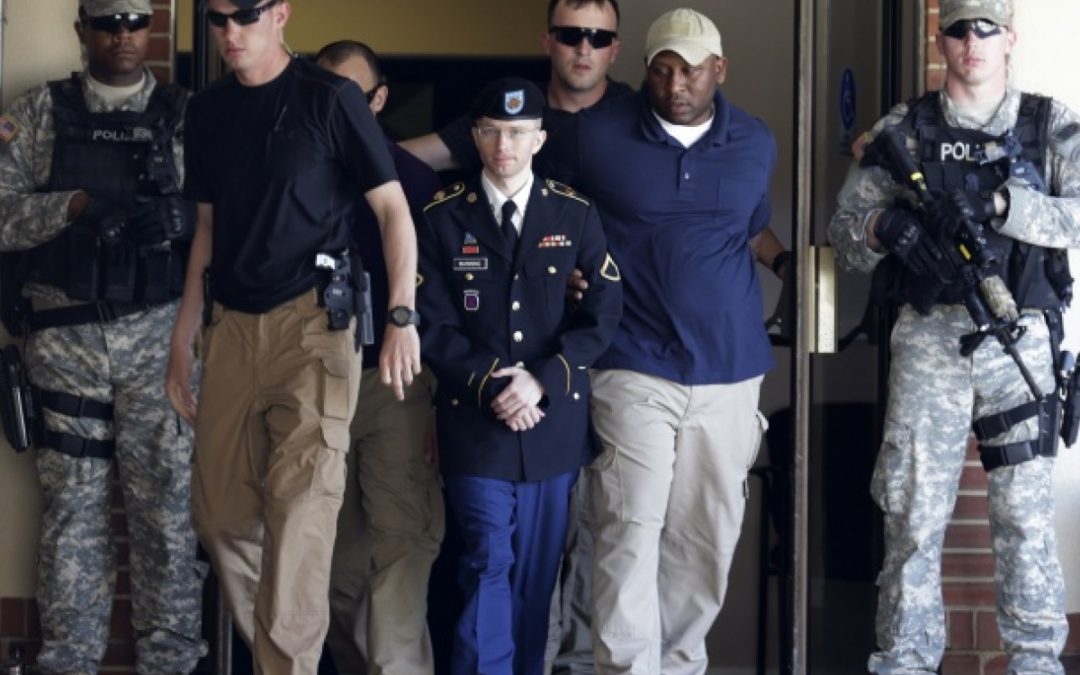One thing that you can say for ISIS, the Middle-East terrorist army, is that it doesn’t have a recruitment problem. Young men are streaming to Syria and Iraq from all over the world to join the cause. And they come not just from the Muslim world, but also from England, France, Sweden, Australia, and the U.S.
Perhaps hoping to put a dent in the appeal of ISIS, some Western newspapers have made much of the expensive stolen watch visible on the wrist of ISIS leader Abu Bakr al-Baghdadi during his first public appearance at the Grand Mosque in Mosul. According to several articles, this proved that al-Baghdadi was a hypocrite because such a show of stolen worldly possessions is contrary to the spiritual nature of Islam.
As usual, the mainstream media is all wrong about Islam. In FrontPage Magazine, Daniel Greenfield points out that “looting was the core of Muhammad’s conquests.” And it came with Allah’s seal of approval. Numerous passages in the Koran and in the biography of Muhammad attest to the legitimacy of booty as the proper reward of fighting. Islam has no trouble with looting, says Greenfield, because it is “innately a gang religion”:
The gang … finds meaning in the ethos of the fight and in the comradeship of fellow gang members. That is why jihad is so central to Islam … Jihad is the gang culture of Islam. Its bonding rituals are central to Islam, whose original elements derive mainly from the raids of Mohammed and his companions…
Young men don’t join gangs just for the booty, but also for the sense of brotherhood the gang confers, and, perhaps primarily, for proof of masculinity. Psychologists and sociologists have known for a long time that gangs are particularly appealing to fatherless boys because boys who lack the guidance of fathers are most likely to feel insecure about their masculine identity, and thus most likely to seek confirmation of it in the ultra-masculine activities of gangs. Social scientists were hardly the first to discover this basic fact of male psychology. From the earliest times, almost all societies developed special rites of initiation for males to assist them in the passage from boyhood to manhood, and to channel them away from anti-social activities.
When boys grow up in communities without the guidance of fathers and elders and without established rites of initiation and confirmation, they tend to create their own initiation groups and rituals of passage. This is why modern urban areas with high concentrations of fatherless boys are the places where gang formation is highest.
The epidemic of fatherless boys is a worldwide phenomenon and it spells more recruits for the Islamic jihad. The reason the jihad doesn’t have a recruitment problem is that it appeals to basic masculine psychology. It promises action, male bonding, legitimate looting, a cause to fight for, subservient females in this world, and dozens more in the next. It’s the reason Muslims have been extremely successful in recruiting prisoners to Islam both in Europe and America. As I noted in Christianity, Islam, and Atheism:
In the United States, roughly 80 percent of inmates who find faith during their incarceration choose Islam. Many of these men are in prison in the first place because they were attracted to the masculine world of gangs. Now they’re being offered the chance to join the biggest, most powerful “gang” in the world. We’re seeing the beginning of a trend in the West: fatherless boys joining gangs, then ending up in prison, then coming out of prison as converts to Islam and the jihad. (p. 169)
There seems to be no shortage of young men willing to join up with the warrior culture of Islamic jihad. How about our own warrior culture—the U.S. military? The military still produces warriors, but the military culture is changing in ways that may make it less attractive to potential future warriors. Traditionally, the military has served, among other things, as an initiation into manhood. Past Marine recruiting campaigns, for example, were built around themes such as “The Marines Make Men” or “A Few Good Men.”
Exactly what today’s young male recruit is being initiated into is a little more difficult to say. In 2011, Brigadier General Loretta Reynolds was put in charge of Parris Island, the base where approximately half of U.S. Marines receive their basic training. By all accounts, she’s a competent person. As a fellow officer put it, “take the female part out of it, she’s an outstanding officer.” Take the female part out of it? But how do you do that? As General Reynolds admitted in an interview, it’s confusing for some of the men who “stumble on occasion and address her as ‘sir’ instead of ‘ma’am.’” Well, yes, it can be a bit confusing when the person in charge of manhood training is a woman. It’s not a question of competency, it’s a question of gender roles. Perhaps the Marine Corps can get away with putting a woman behind the top desk at Parris Island, but how would it work if the drill sergeants were women? Boot camp is a process of maturation through challenge and identification. The drill instructor is the supervisor of a male initiation rite. If he’s doing his job right, he offers himself as a model of masculine excellence. But how can a woman be a model of masculinity and how can a man identify with her as such?
Confusion about gender seems to be the order of the day in the Army. When Private Bradley Manning was tried for his part in the WikiLeaks intelligence leak, his lawyers argued that the transgender soldier suffered from “gender identity confusion.” While the Army can survive one or two gender-confused soldiers, here and there, what happens when the top command itself is confused about matters of sex role, sexual identity, and sexual orientation? Here are some not untypical headlines:
- “Pentagon holds first-ever gay pride event”
- “Lesbian couple shares Navy’s ‘first kiss’ homecoming honors”
- “Soldiers don fake belly, breasts to better understand pregnant troops’ concerns”
- “The U.S. could have its first female Navy SEALS by 2016.”
The matter becomes even more complicated when you add mission confusion to gender confusion. The main mission of the Army is to win wars, but it hasn’t been allowed to do that in quite a long while. Moreover, at one time it was thought a good idea to name your enemy and, for the sake of morale, you could even poke fun at him. Nowadays, enemies are identified only vaguely (as in “violent extremists”), and name-calling is not allowed. A manual for U.S. troops in Afghanistan cautions them to avoid “making derogatory comments about the Taliban.” The Army’s mission also has something to do with instilling a sense of the values you are fighting for. General Eisenhower spoke of the war against the Nazis as a “Crusade in Europe.” Woodrow Wilson said that our participation in World War I was to “make the world safe for democracy.” Now that the military has become a lifestyle laboratory, it’s a bit more difficult to discern the mission. Here’s a 2011 headline from the LA Times:
- “Air Force Academy adapts to pagans, druids, witches, and wiccans: Officials say an $80,000 Stonehenge-like worship center underscores a commitment to embrace all religions”
We may not think very highly of the ISIS soldiers, but at least they’re clear about their mission—fighting for the sake of Allah and the rewards that come of it. But what’s the mission of our troops? To make the world safe for wizardry? Affirmative action for transgender school teachers?
The administration and the Pentagon may deny it, but the feminization and gaying of the military, together with the blurring of the Army’s mission, is bound to have an effect on the attractiveness of the military for young men. It’s not a question of whether gays can fight or whether women make good warriors, it’s a question of what kind of culture is being created. Right now the U.S. military is in the process of creating the kind of culture that is a guaranteed turn-off for many potential enlistees. And it’s not as though they have an abundance of qualified candidates from which to choose. At a time when 71 percent of American youth would fail to qualify for military service because of obesity, tattoos, prescription drug use, felony convictions, and educational level, the Pentagon can ill-afford to gamble that their unprecedented social experiments will work out for the best.
By all appearances, ISIS doesn’t face an obesity crisis among its pool of potential recruits. Men who, for religious reasons, are willing to fast till evening every day for the month of Ramadan are already used to the kind of sacrifices that the warrior life requires. Moreover, ISIS and other similar groups can count on the gender-confused West to churn out even more recruits for Islam. The breakdown of the idea that men have a special role to play as protectors and providers has led to a widespread collapse of the family. And that in turn has resulted in an epidemic of fatherless children.
There are armies of teens in the West who are looking for an army to join. It doesn’t have to be a real army. A gang will do—so long as it provides male bonding, a warrior ethos, and the “reputation” that goes along with gang membership.
If you’re a young man without a father around, you’ll be looking, naturally, for the biggest, toughest brotherhood on the block. Increasingly, that looks like militant Islam. It promises everything that a wannabe warrior could ask for, and it commands far more respect than your average street gang ever will.
Our own military should take note. When the armies of Islam are drawing young men from around the world to join the jihad, it might not be the best time for the U.S. Army to emphasize its feminine side.
FROM THE VAULT
This article originally appeared in the July 17, 2014 edition of Crisis.
Pictured above: Private Bradley Manning departs day two of his court Martial trial.
Photo credit: South China Morning Post.


